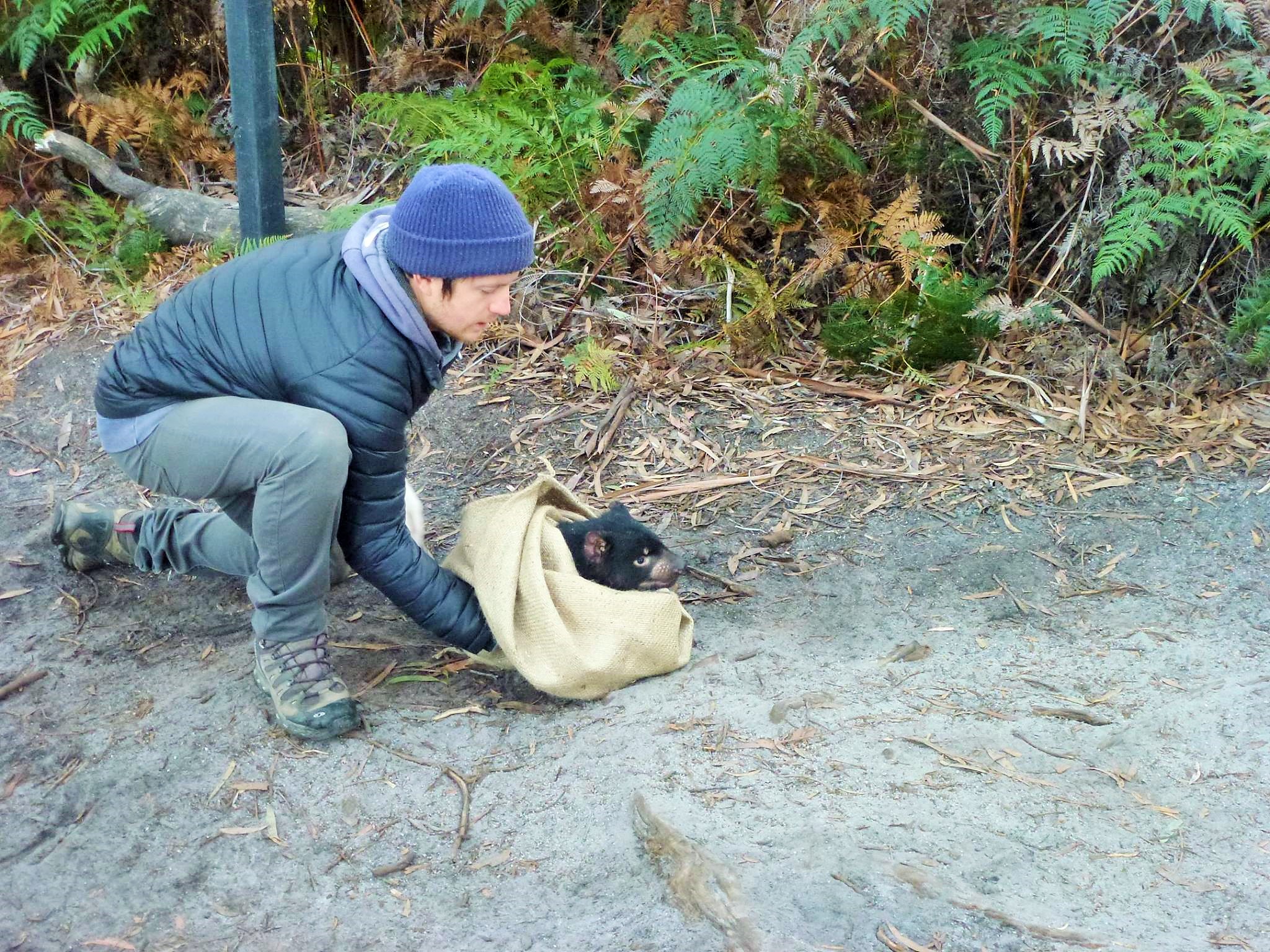In experimenting with non-lethal control methods for introduced animals, researchers from the Australian National University and the University of South Australia found that if baits deliberately laid for red foxes (Vulpes vulpes) are spiked with capsules containing a chemical that causes vomiting and nausea, the reaction is similar to that of humans who consume foods that make them feel unwell. Those foods are avoided in future.
The world first experiment was conducted at 30 stations across open landscape in south-eastern Australia where foxes are responsible for countless wildlife deaths. The scientific team buried baits of fried deboned chicken, some of which contained capsules of levamisole, a chemical that induces nausea and vomiting when consumed by predators.
Tim Andrewartha, lead author of the paper published recently in the journal Conservation Science and Practice, and a PhD student at ANU’s Fenner School of Environment and Society, said using non-lethal tactics for keeping predators at bay could potentially be more effective than shooting, trapping or poison baiting in certain contexts as these could lead to adaptations in the predator population that counteract the control method used.
“Some techniques become less effective over time, poison baits for example can lead to bait resistance or shyness, so the potential for non-lethal methods is something we hope to explore in the future,” he said.
A range of encapsulated nausea-inducing agents can be injected into food sources such as eggs or animal carcasses so the predator associates the symptoms with food odour and not the chemical.
Co-author Anton Blencowe, an Associate Professor, senior lecturer and Applied Chemistry and Translational Biomaterials Group Leader at UniSA’s School of Pharmacy and Medical Sciences, said invasive predators were responsible for almost 60 per cent of all bird, mammal, and reptile extinctions globally, so finding ways to mitigate their impacts on native wildlife was critical.
“Existing lethal control methods can be counterproductive in some situations, with predators capable of adapting their behaviour and becoming harder to control, so the conditioned taste aversion tactic employed in this experiment has shown promise as a tool to reduce the predation of vulnerable wildlife,” Blencowe said.
Over three sequential periods researchers laid untreated baits followed by encapsulated levamisole baits, and then untreated baits again two weeks later. During the final period baits taken fell by at least 30 per cent, suggesting foxes had consumed the treated baits, fallen ill, and were reluctant to go back for seconds, despite the absence of levamisole. The reduction in baits taken continued for at least 68 days after treatment.
“This evidence shows it’s possible to condition foxes to avoid food sources based on their unique odour, and ultimately this strategy may be applicable to protecting vulnerable wildlife living in that habitat, although more research is needed to determine the best chemical and dosage used,” Andrewartha said.
Future research will involve determining if the conditioning aversion tactic is more effective in foxes through using live prey or a carcass, as well as the time between consumption and onset of symptoms.
Anne Layton-Bennett
‘Landscapes of nausea: successful conditioned taste aversion in a wild red fox population’ is available at doi.org/10.1111/csp2.12984





